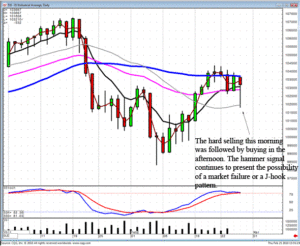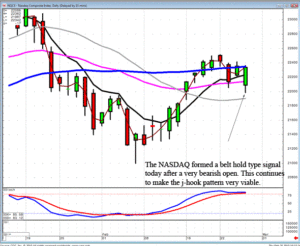What is meant by diversifying a stock portfolio? Why do it? How does an investor diversify? Diversifying a stock portfolio is an investment strategy where the investor chooses investments that react differently to varying conditions in the stock market and market sectors. Investors diversify their investments to reduce investment risk. A basic method of diversifying a stock portfolio is to choose five stocks in five different market sectors. Ideally the various market sectors and the stocks react differently at the various points in the business cycle.
By choosing stocks with different characteristics, diversifying a stock portfolio spreads out the risk of investing. Ideally the investor chooses stocks in such a way that when one stock, such as a manufacturing company is hurt by higher interest rates, and drops in stock price, another, a bank charging higher interest rates, will see the price of its stock shares go up. In diversifying a stock portfolio the point is not just to pick stocks that will balance each other but picking stocks in more than one potential area of growth and profit. Buying stocks in computer technology, biotech, big oil, consumer goods, and financials not only reduces the investor’s risk of a huge loss if one company has problems but it offers opportunity for growth in a wider arena.
Diversifying a stock portfolio can be fairly simple and it can be immensely complicated with lots of charts, formulas, and the like. A good rule of thumb for beginning investing in the stock market is to keep it simple. A good practice is to buy stock in no more than one company to start with. In fact, smart stock market investing for a beginner would be to pick one stock at a time and stop at five. Diversifying is to reduce risk but fundamental analysis, value investing, and using tools such as Candlestick basics to find currently low prices in good stocks are necessary to find the best individual stocks.
Unless the investor is a professional who devotes all of his or her day to investing and stock trading there is only so much time to devote to following stocks in a portfolio. Five stocks is typically a sufficient number for diversifying a stock portfolio and not too many to keep track of with tools such as Candlestick analysis at least once a week. Five stocks are usually not too many for keeping up with the stock market news as it applies to each stock and its sector of the stock market. More complicated stock portfolio diversification has its place with institutional investors managing huge portfolios. For the beginner, keeping it simple is the best choice.
Diversifying a stock portfolio need not be limited to picking five different stocks. The investor can also choose to invest in the futures market, the commodity market, and foreign currency trading as well as basic stocks and bonds. As with all investing and trading, success has to do with an adequate knowledge base, well practiced, attention to detail, and sufficient time in the work day to accomplish what needs to be done. Although there is potentially no limit to how much an investor can manage portfolio diversification (and life) there always comes a point where keeping it basic and simple works as well or better than excessive variety and detail.
When the markets start moving in a whipsaw motion, where is the best place to have your funds? In cash! The purpose for using any analytical tool is to gain an advantage. The advantage of candlestick analysis is being able to assess what is occurring in investor sentiment. The utilization of that information is what puts the probabilities greatly in the candlestick investor’s favor. However, in market conditions, as we have seen over the past three days, has made it very difficult to analyze what is occurring in investor sentiment. When that is the case, there is no investment advantage. Put the money in cash for a few days until the market trends can be better analyzed.
Currently the Dow is still trading below the 50 day moving average but it closed just above the T-line. This produced a strong hammer type signal today. The NASDAQ formed a belt hold type signal today. Although both indexes are trading below the 50 day moving average, the volatile buying and selling of the past few days still provides indications of a J-hook pattern setting up.

DOW

NASDAQ
What does the whipsaw action do to the portfolio? Using the Japanese Rice traders philosophy that you do what the market is telling you to do, it can create small losses by being in and out of the market based upon getting stopped out. However, this is exactly the function of using candlestick signals and logical stop loss placement. There will be times when the market moves erratically. There is no way to analyze ahead of time for that type of market action. It has to be anticipated there will be times when positions will get whipsawed. Fortunately, the whipsaw action of the market can be a set up for another strong price move. The small losses produced during the whipsaw actions will be well made up for by being prepared for the next market move.
As is illustrated in both the Dow and the NASDAQ charts, the ‘open’ of tomorrow’s trading will be very important for the analysis of the market trends. Lower opens will still indicate resistance at the 50 day moving average. A strong open would indicate a J-hook pattern is in progress. Whichever way the market opens, it will be a very clear signal for which direction to be investing. This analysis is made easy utilizing the if/then aspects of candlestick signals.
Chat session tonight at 8 PM ET. Tina Logan will be the guest speaker. Her emphasis tonight will be on utilizing the information built into double bottoms.
Good Investing,
The Candlestick Forum Team
Speak Your Mind